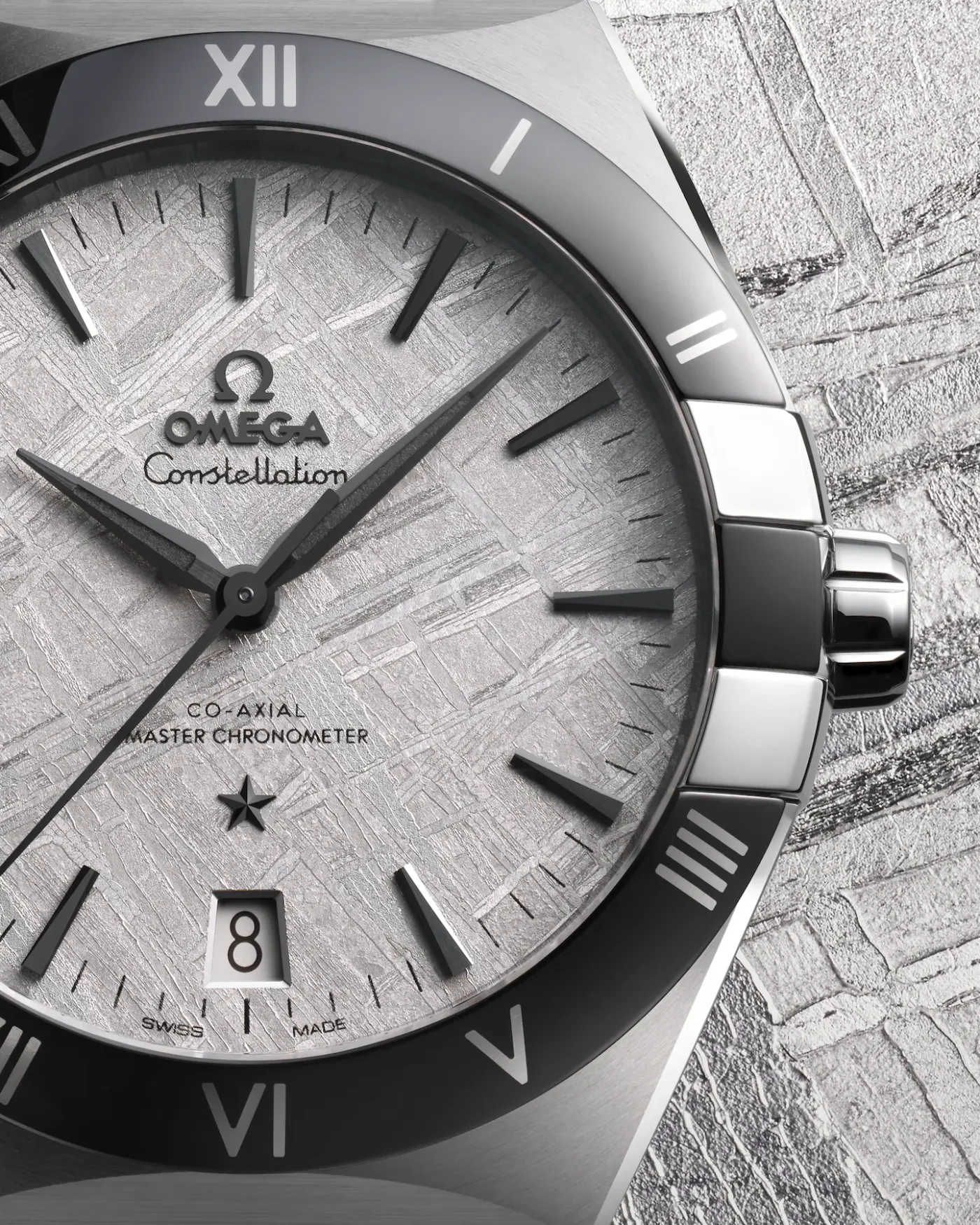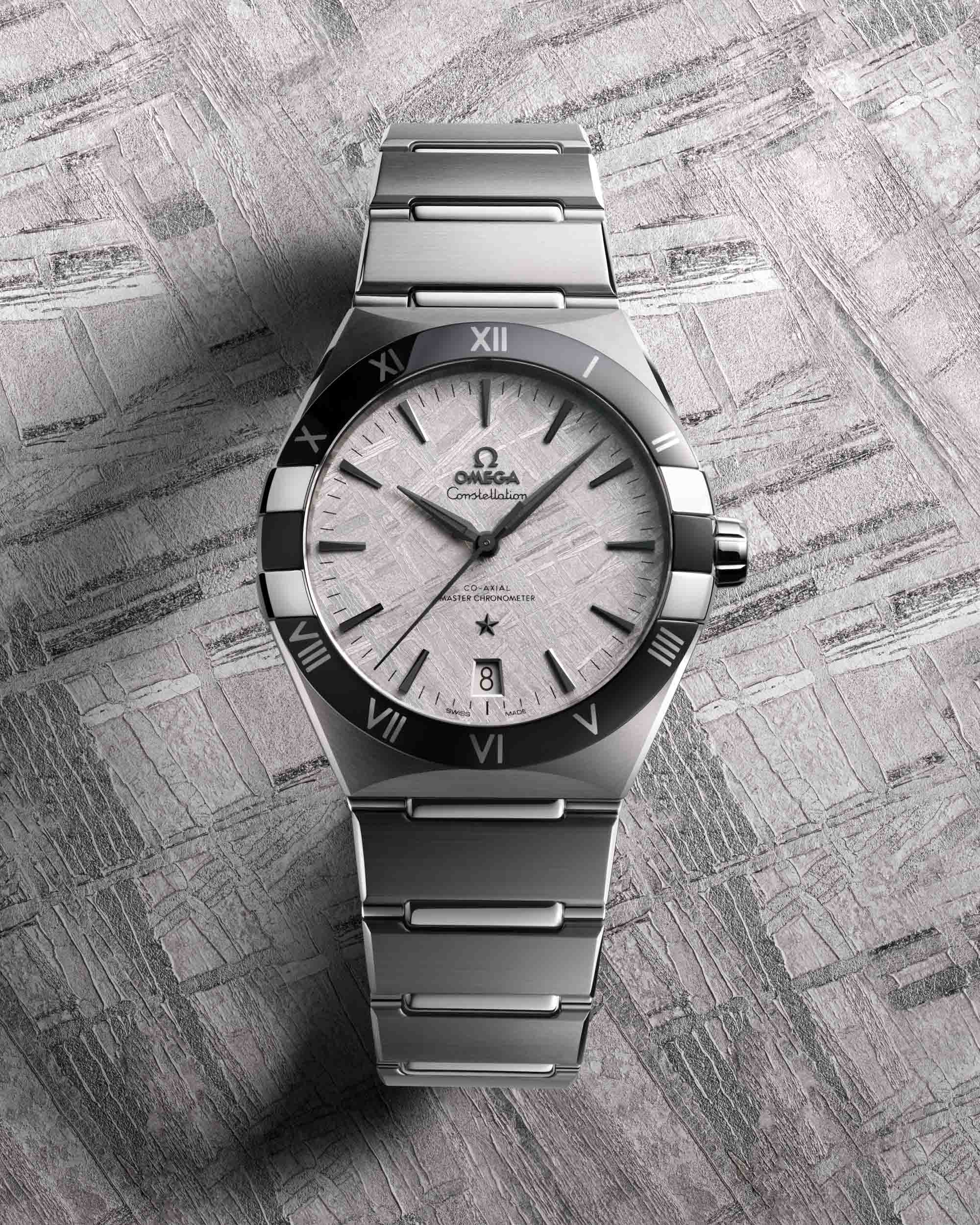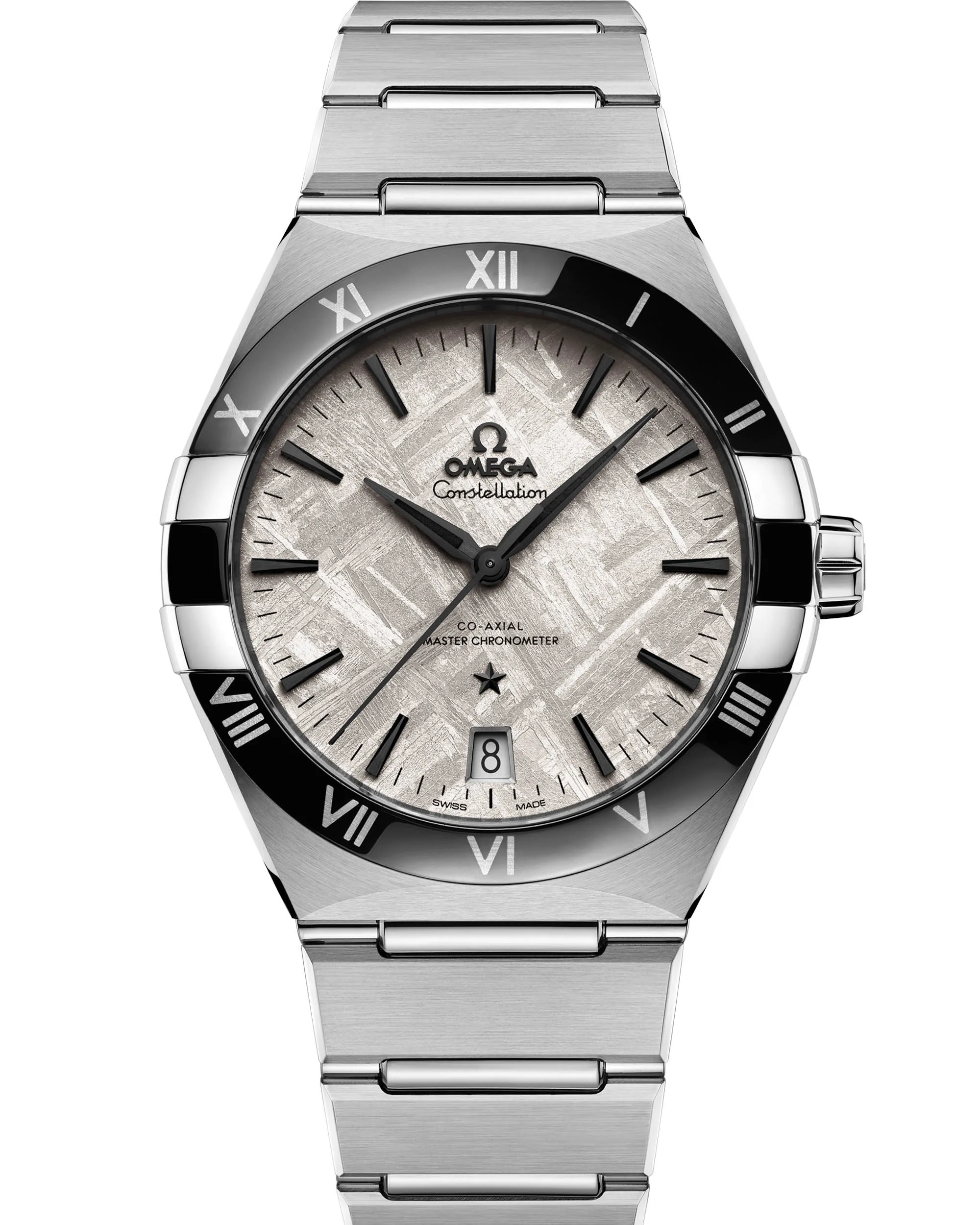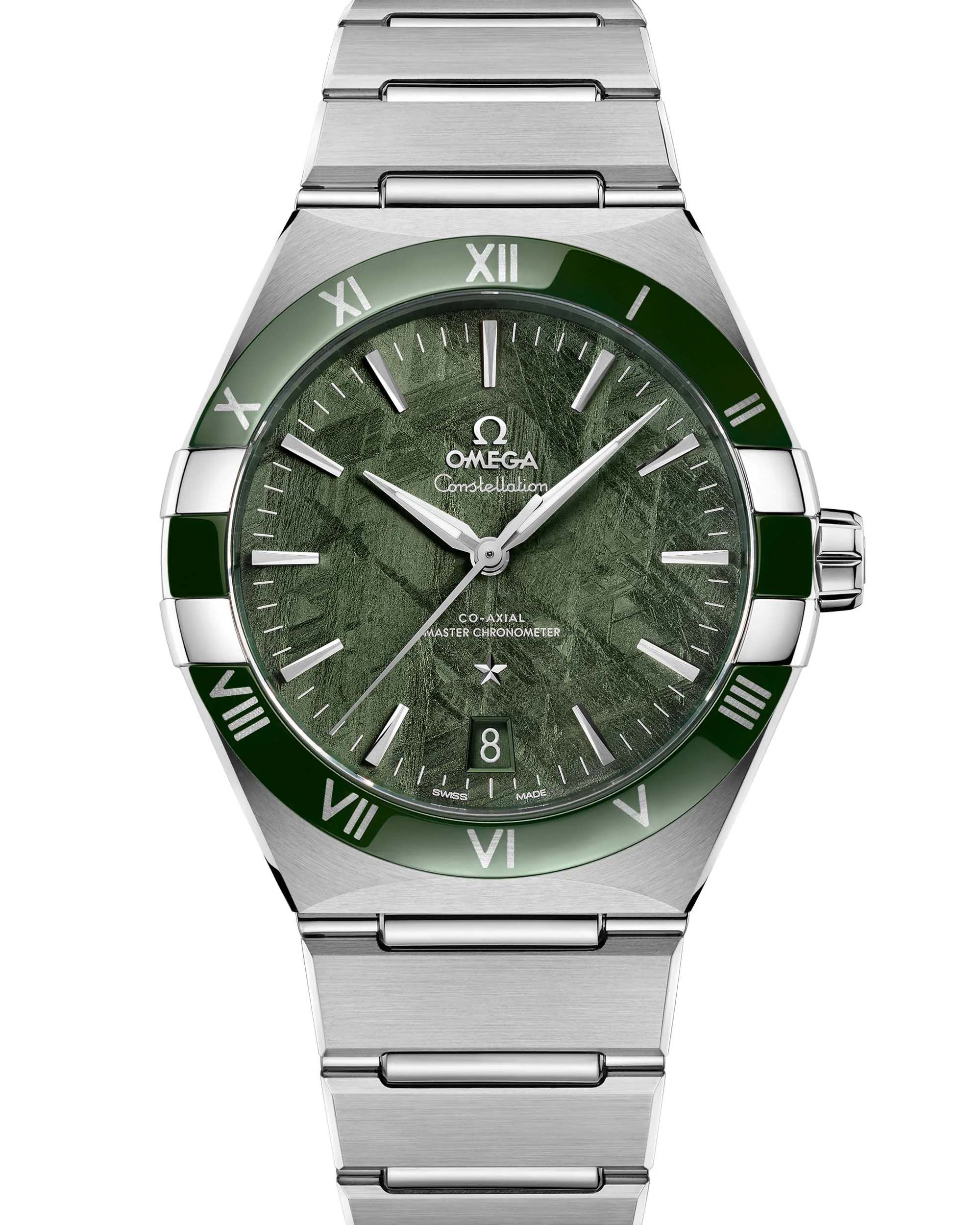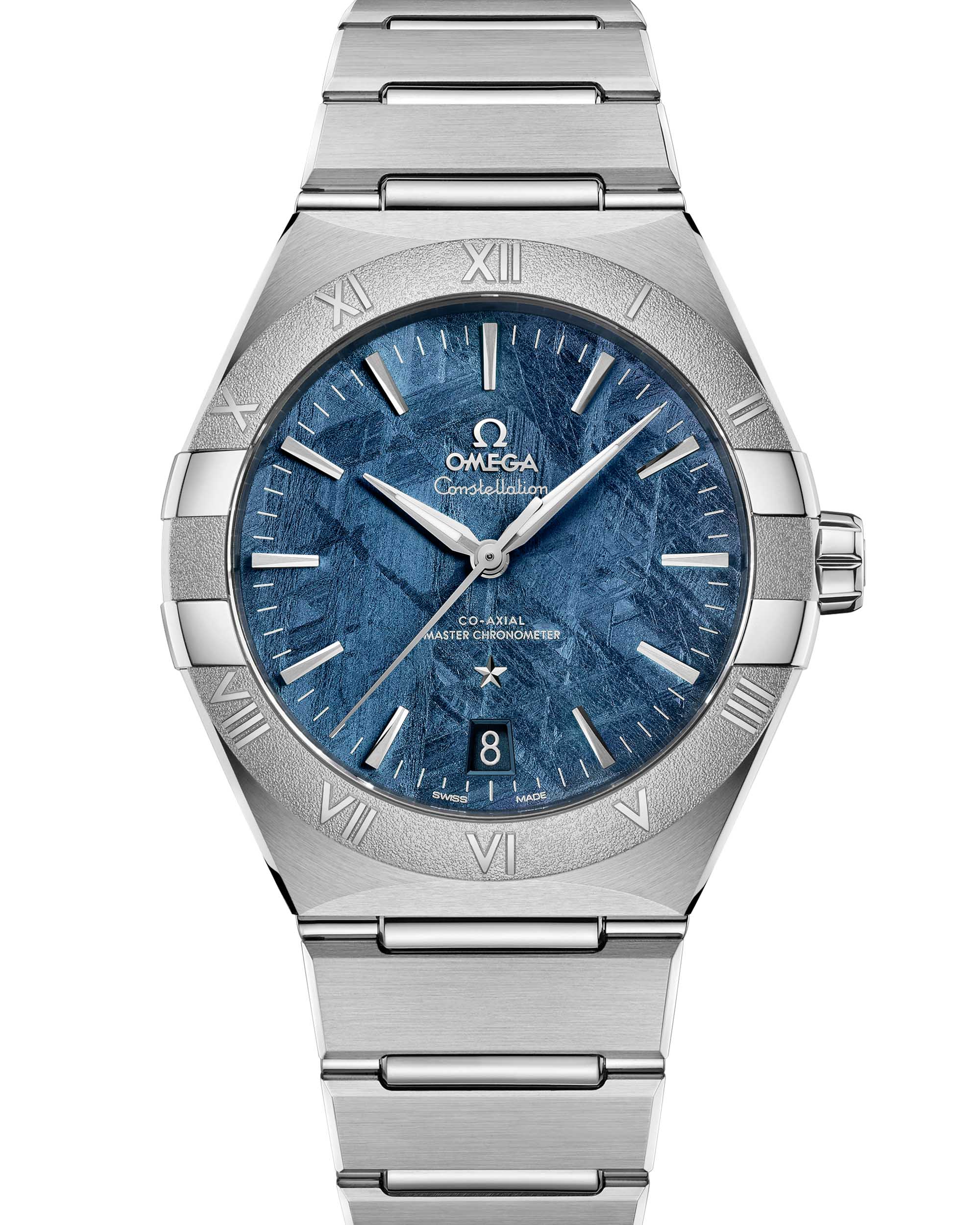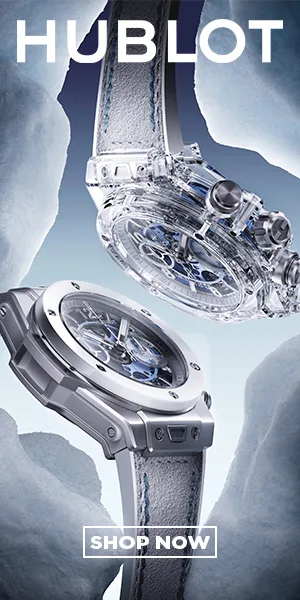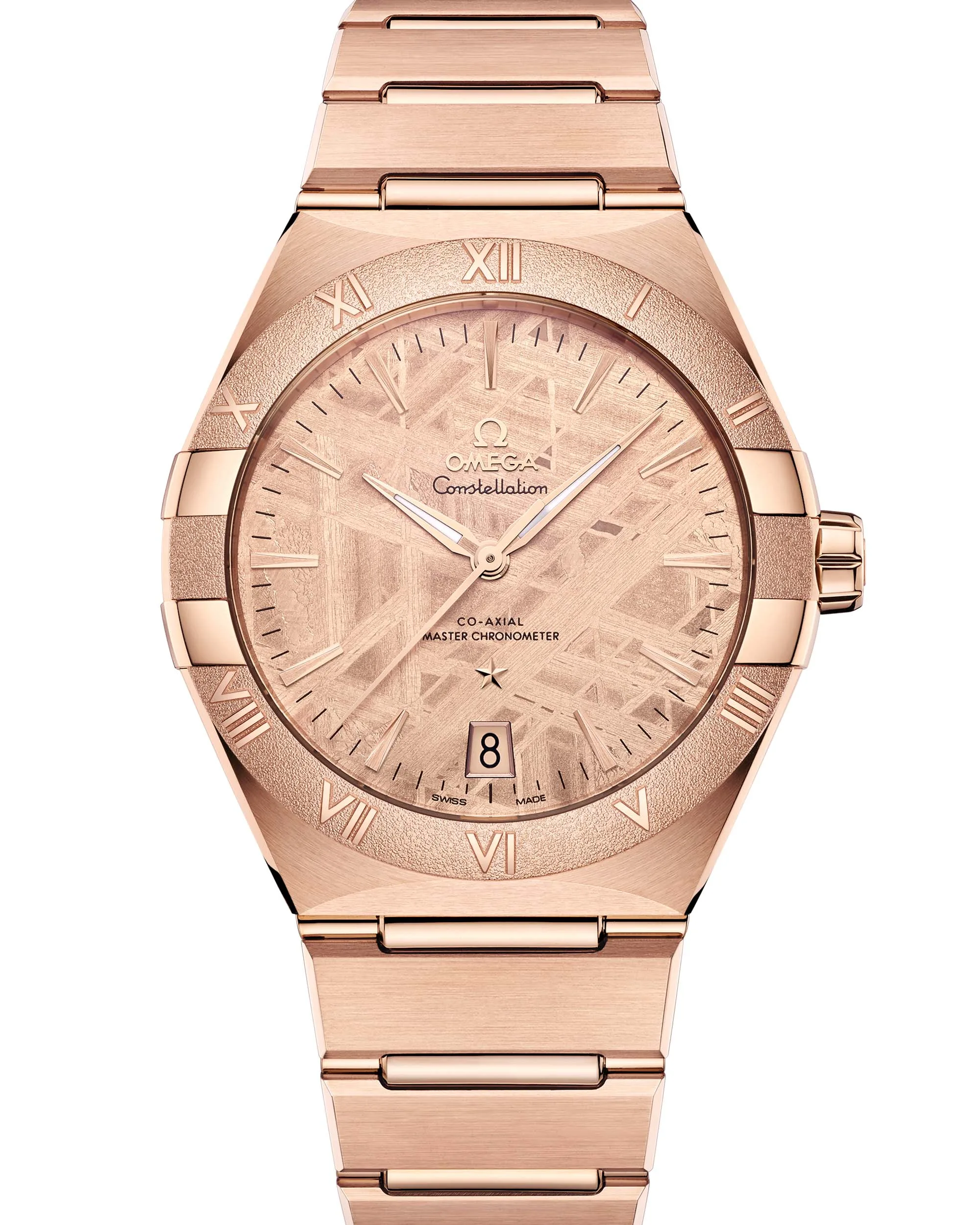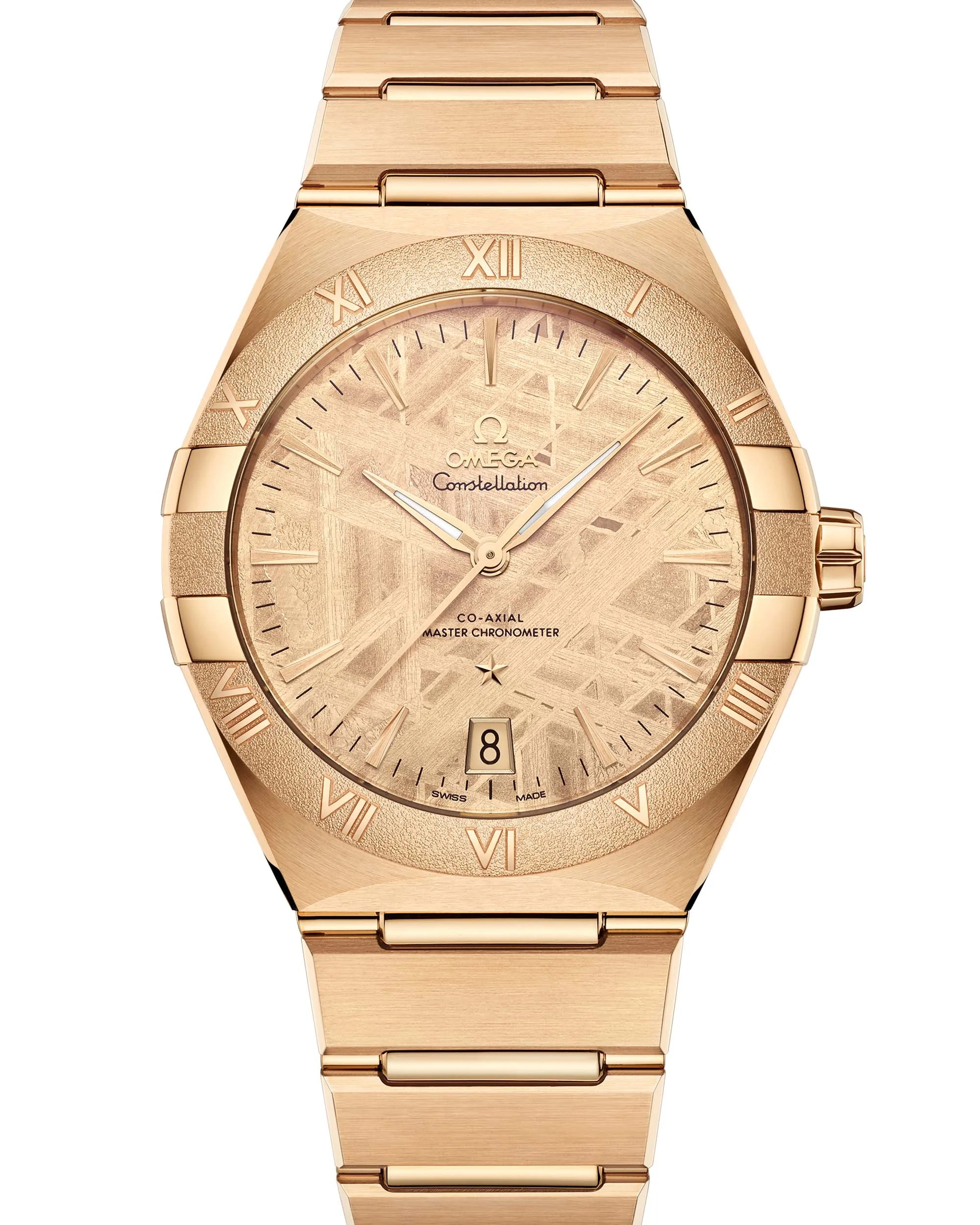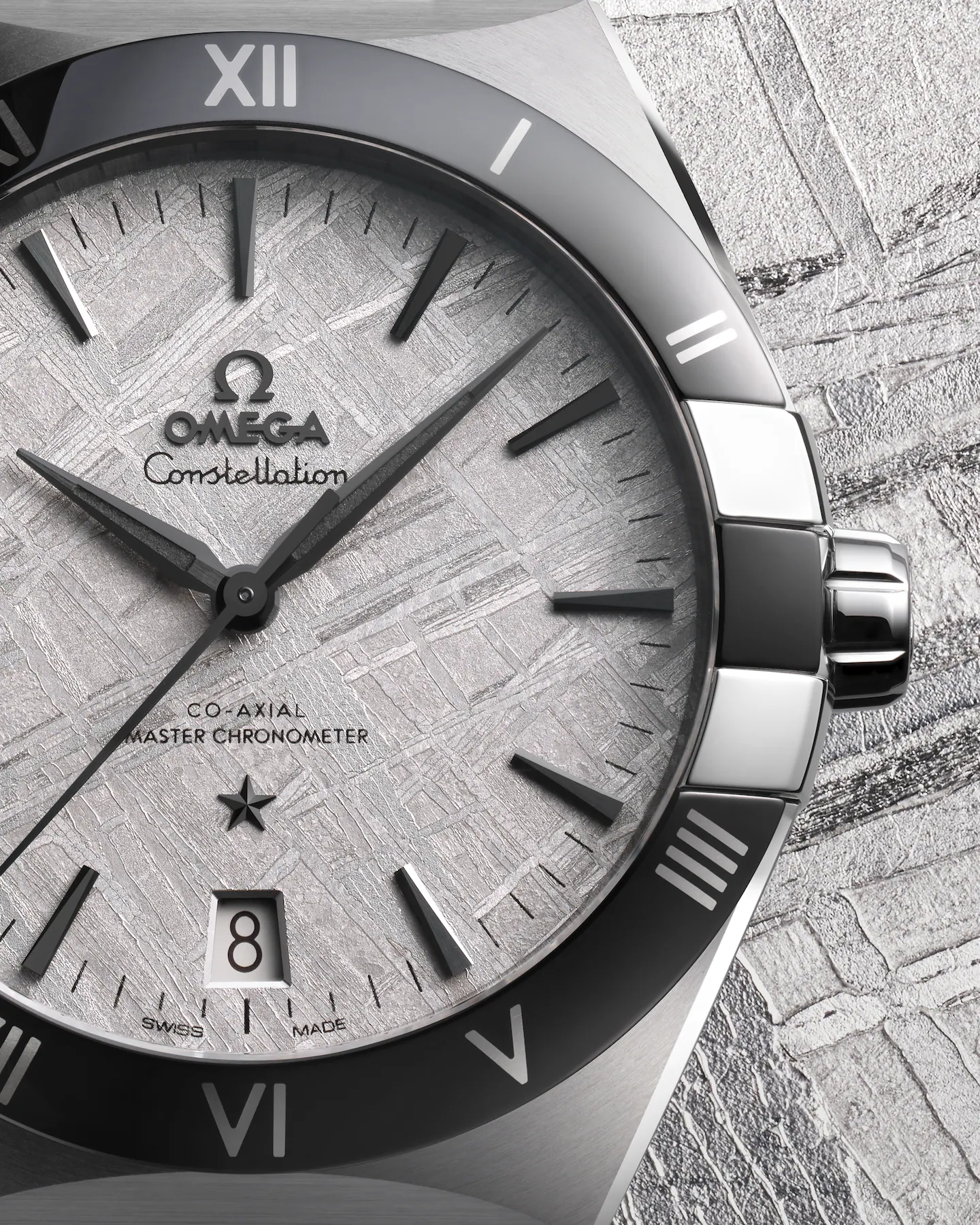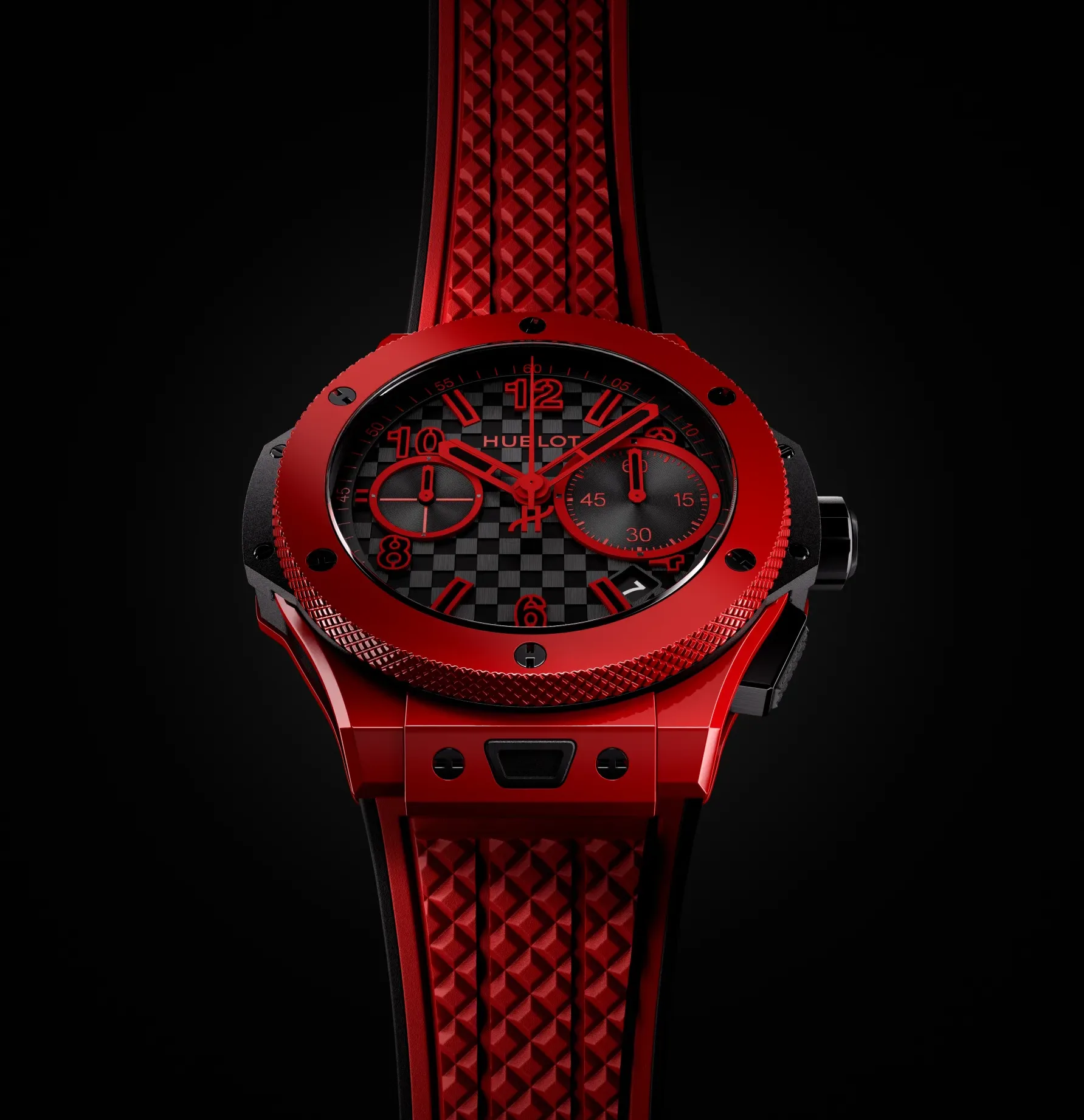BY HARLAN CHAPMAN-GREEN
Omega’s on a bit of a roll with its releases at the moment. We’ve had the boutique-only Planet Ocean watches, the 38mm Seamaster Aqua Terra with the green dial and now a slew of new Constellation models with an interstellar twist. The Constellation is a great watch, but you very rarely see them at events or gatherings. I’m not sure quite why this is; the Constellation is an interesting watch; perhaps it’s the quirky looks or the fact that the Aqua Terra also exists, resulting in the Constellation being overlooked. That’s a great shame as the model has a rich history and the new pieces which have just been added make it an even more attractive option.
Meteorite is a favourite among watch manufacturers who want a dial that looks unique, which also has a talking point; it also helps that each meteorite dial is completely unique due to the natural variations in the rock that fell to Earth. Omega has made five new watches with it, and most of them have been given a unique colour to match another detail on the watch.
131.30.41.21.99.001
Let’s break this dial matter down a little further. Reference 131.30.41.21.99.001 is the silver dial model; the dial has been galvanised to retain the silvery look, which matches the stainless steel case and yet contrasts the black ceramic bezel and PVD-treated black hands and applied logo & markers. Reference 131.30.41.21.99.002 is the green model; this one comes with a meteorite dial that’s been PVD coated to give it a colour in keeping with the green ceramic bezel; the hands, markers and such are 18k white gold on this model. For reference 131.30.41.21.99.003, a PVD blue dial with 18k white gold accoutrements has been used; this one gains a titanium bezel with a frosted appearance. All of these come with a stainless steel bracelet with a butterfly clasp which has a 2mm extension for if it gets a little too tight during the day, which is quite common as your wrist expands.
131.30.41.21.99.002
Reference 131.50.41.21.99.002 has a PVD-coated dial coloured to match the 18k Sedna gold case and bezel. Sedna gold is a proprietary mixture from Omega, which is coloured like rose gold but won’t tarnish over time. Unlike blends from other high-end manufacturers, Sedna gold does still have a rose gold-y type colour to it. The reference 131.50.41.21.99.001 has a PVD meteorite dial coloured in Moonshine gold to match the bezel and case. Another unique blend from Omega, Moonshine gold, was made for the 50th anniversary of the moon landing. It also doesn’t tarnish over time and looks slightly different to yellow gold, but it’s not rose gold per se. Both of these watches have a bracelet also made of gold.
131.30.41.21.99.003
All of these watches measure 41mm x 13.5mm which makes them a great size for the modern audience. Their dressy nature is more pronounced than, say, the Seamaster Aqua Terra, and their 50m water resistance indicates that they can be splashed but shouldn’t be treated as a sports watch. That then puts the Constellation in competition with watches like Chopard’s Alpine Eagle, which costs considerably more than a Constellation would but also has a unique dial. More on pricing in a bit.
131.50.41.21.99.002
Where, perhaps, the Chopard may not keep up is in the movement department. Omega is a maker of very fine movements indeed, and the calibre 8900 and 8901 in these watches are a testament to this. Mechanically, both movements are identical; they have a 60-hour power reserve with a 3.5Hz beat rate and a co-axial escapement plus METAS certification guaranteeing accuracy and magnetic resistance (up to 15,000 Gauss). They also have free-sprung balances for extra shock resistance, a date function and a quickset hour hand for easy adjustments; they’re also self-winding. The only difference between the calibre 8900 and 8901 is the material of the rotor and balance bridge, which are solid 18k Sedna gold on the gold models. The steel models get the calibre 8900.
131.50.41.21.99.001
In terms of pricing, these watches are priced at the higher end of the three-hand date watch market thanks to that exotic dial. The prices start at $9,300 for the blue dial/titanium bezel combination. The two steel/ceramic models with their silver or green dials cost $9,700. Unsurprisingly, the solid gold watches cost a lot more at $42,400 each.
I don’t want to sound like a broken record here or like someone who isn’t able to criticise a watch brand, but I like this new release from Omega, too; the meteorite dial really works on these watches and gives them an exotic yet dressy look to match their exotic-yet-dressy cases. I just hope people won’t skip over these for something with a crown logo on it.

